WHY LIVESTOCK GUARDIAN DOGS DESERVE YOUR ATTENTION
WHEN MOST PEOPLE THINK OF A FLOCK, THEY JUST THINK OF SHEEP. BUT IF YOU LOOK CLOSELY, YOU’LL SPOT A FEW LARGE WHITE-COATED CANINES positioned CALMLY AT THE CENTER.
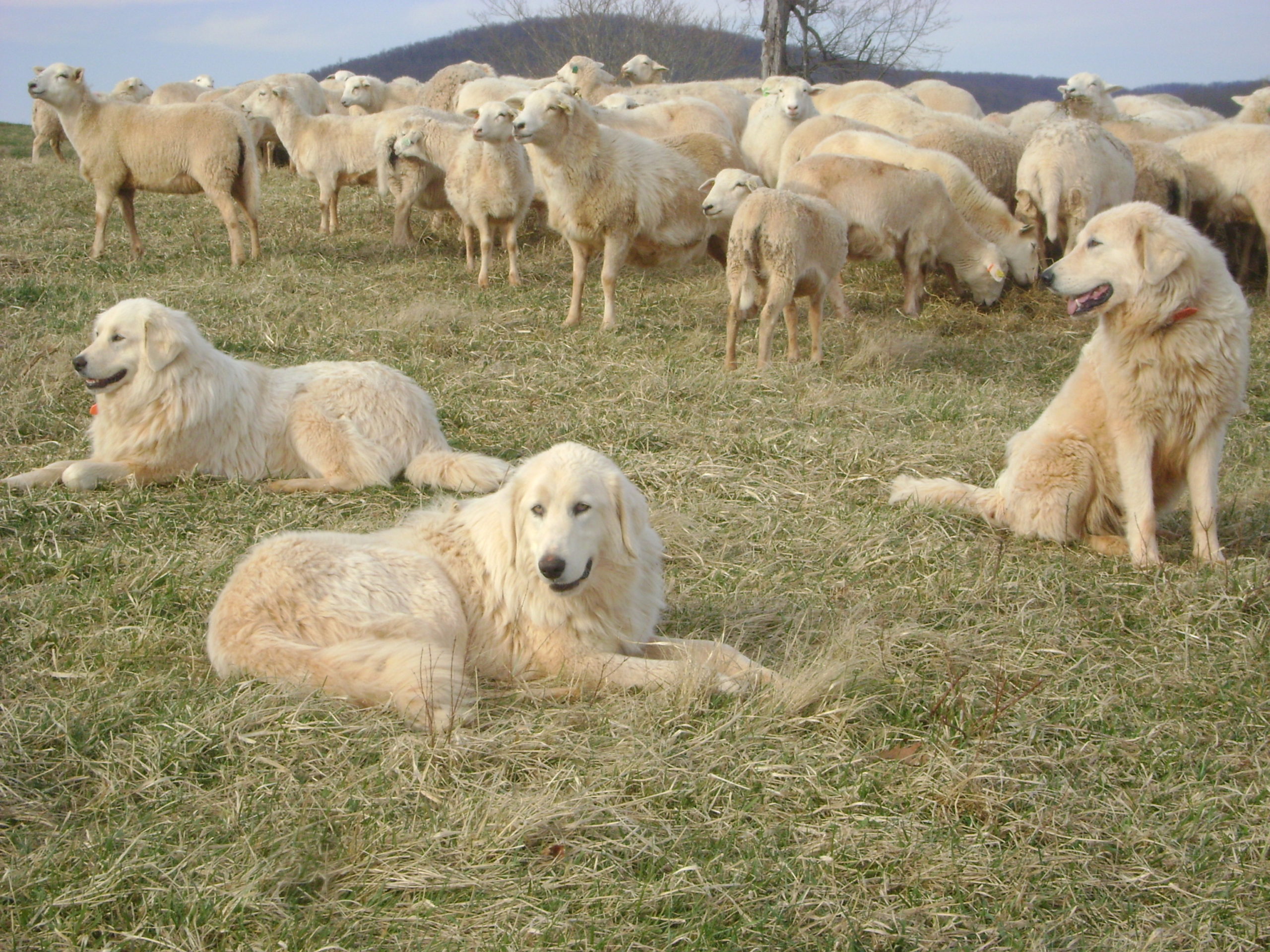
According to Cat Urbigkit, a Wyoming based cattle-and-sheep rancher, author, and expert on the training and use of guardian animals, the working sheep dog isn’t typically the friendly mop-haired “sheep dog” so popular in suburban neighborhoods. “Guardian dogs are large but calm animals that have developed instincts to protect flocks. They’re serious athletes, comfortable living out-of-doors, and easy-going around people,” explains Urbigkit. “This job is nothing new for these dogs. These breeds have pedigrees that are thousands of years old.” Indeed, many livestock protection dogs come from the mountainous regions of ancient Turkey, Mongolia, Spain, and Italy, but the one thing they all share in common is loyalty and courage in the face of danger.
People new to raising sheep quickly realize they have a lot of predators. The most common being coyotes, wolves, mountain lions, and bears. A pack of coyotes can take a sheep or several lambs every day. Naturally, being stalked and hunted creates stress on the animals that every rancher would like to avoid. And it also puts huge stress on the rancher. “We want healthy sheep with long lives so we can get several seasons of wool” explains Urbigkit. Every lost sheep is a long term financial burden on the ranch. If unchecked, a single pack of predators can destroy the economic survivability of any ranch business.” And even if ranchers were to eliminate a local threat, eventually a new pack or pair of predators will return, warns Urbigkit. “Livestock guardian dogs are a natural all-day, all-night way of protecting the sheep.”
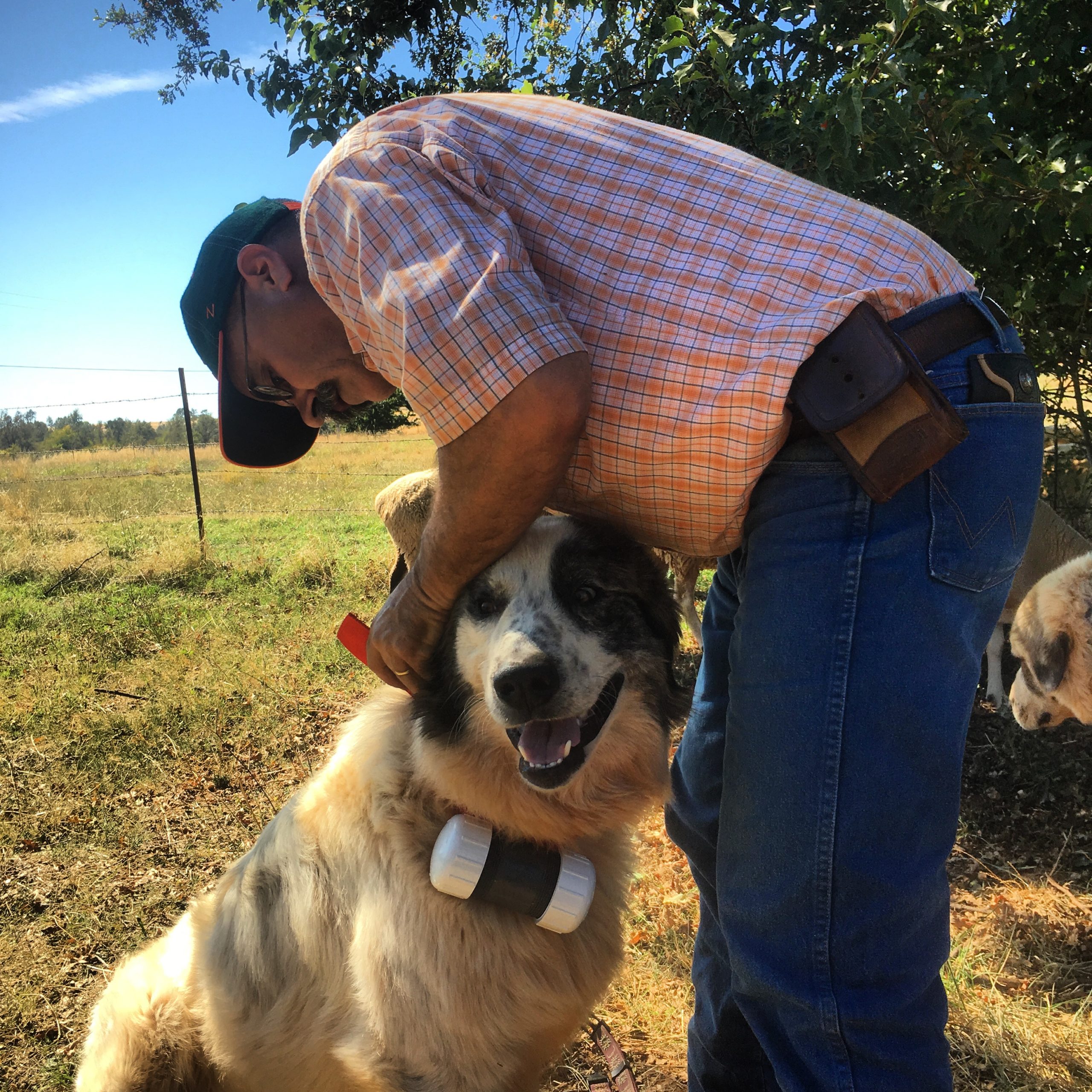
A few states away in Northern California, Dan Macon, a commercial sheep operator and researcher for the University of California Cooperative Extension, couldn’t agree more. “Over the last three years my research has focused on the ability of livestock guardian dogs to displace or simply distract predators. We use GPS collars on dogs and surveys with ranchers to see how the dogs interact with predators across the landscape. We’ve found that the dogs are pushing predators out of the direct area but not out of the region. That means the guard dogs are not displacing the predators, just deterring them from what look like an easy meal. In the end that means the dogs are helping ranchers and predators to coexist.”
Macon lists California’s coyotes, mountain lions, black bears, and fox as his biggest problems. Being in a populated region, he’s also had issues with neighboring dogs. “We even have golden eagles and great horned owls that will happily take a lamb,” says Macon. “That’s not a problem that any new fencing technology can solve. These dogs are problem solvers. They adapt. They’ve learned to keep their eyes up in the air.”
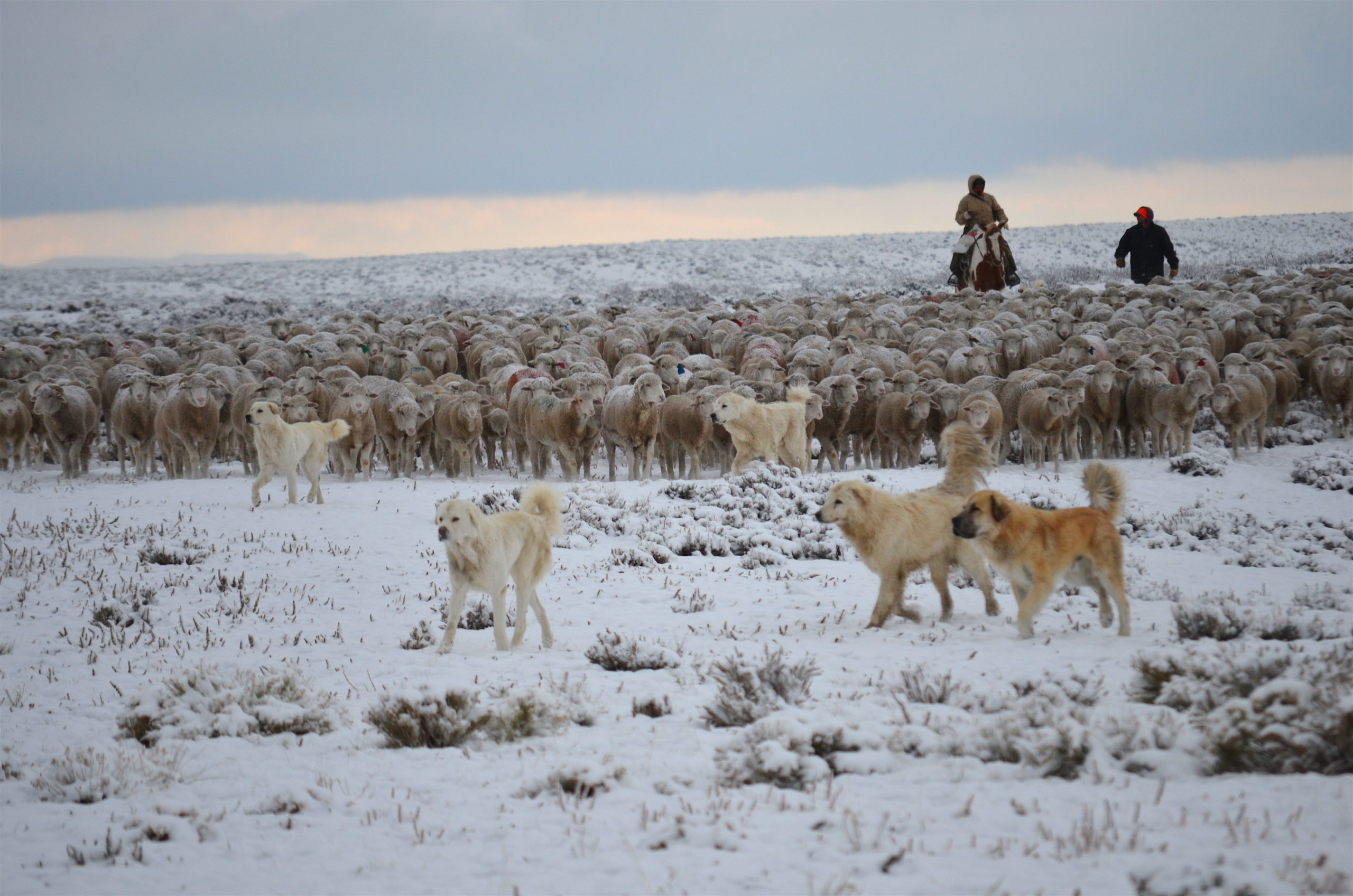
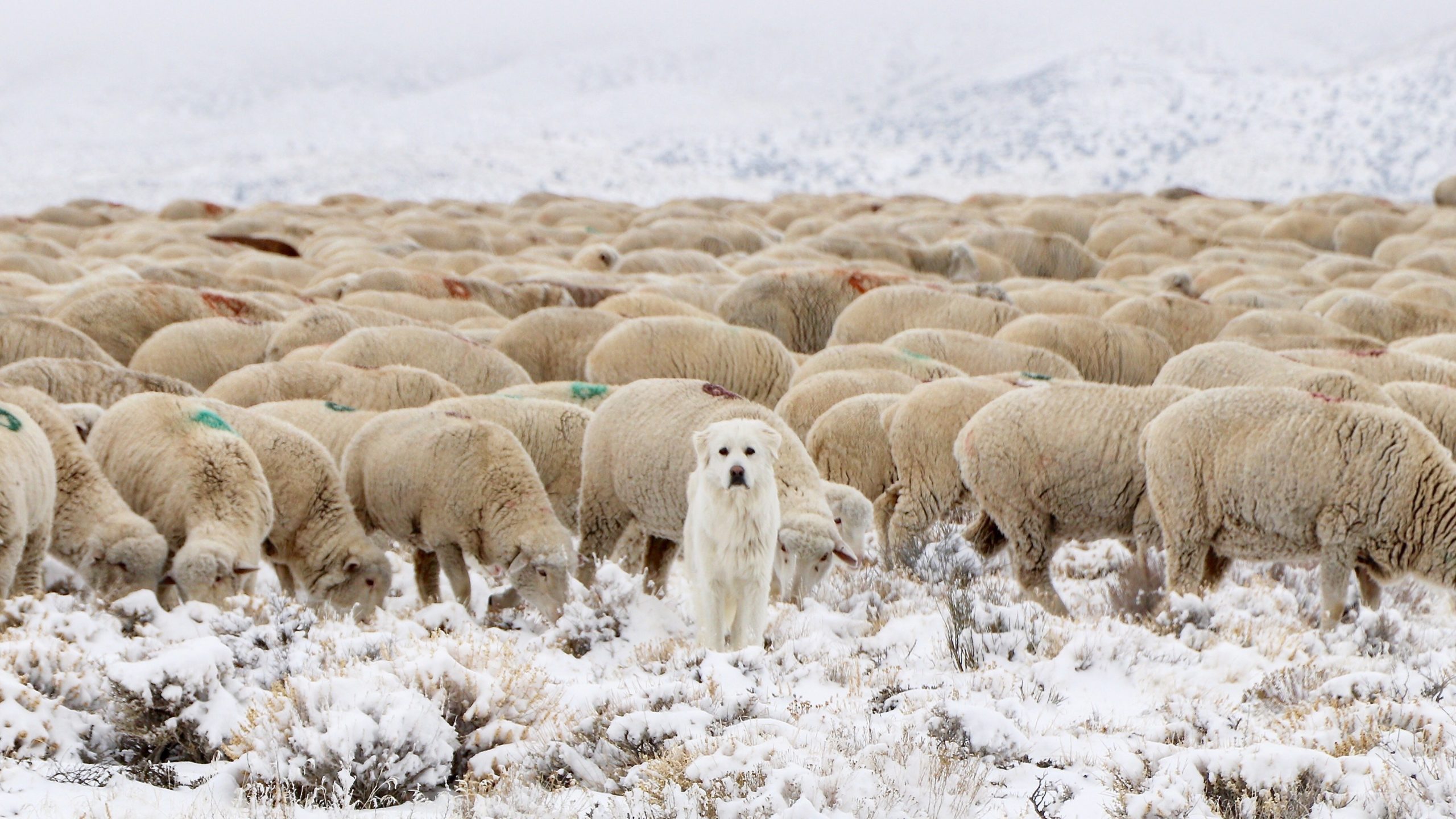
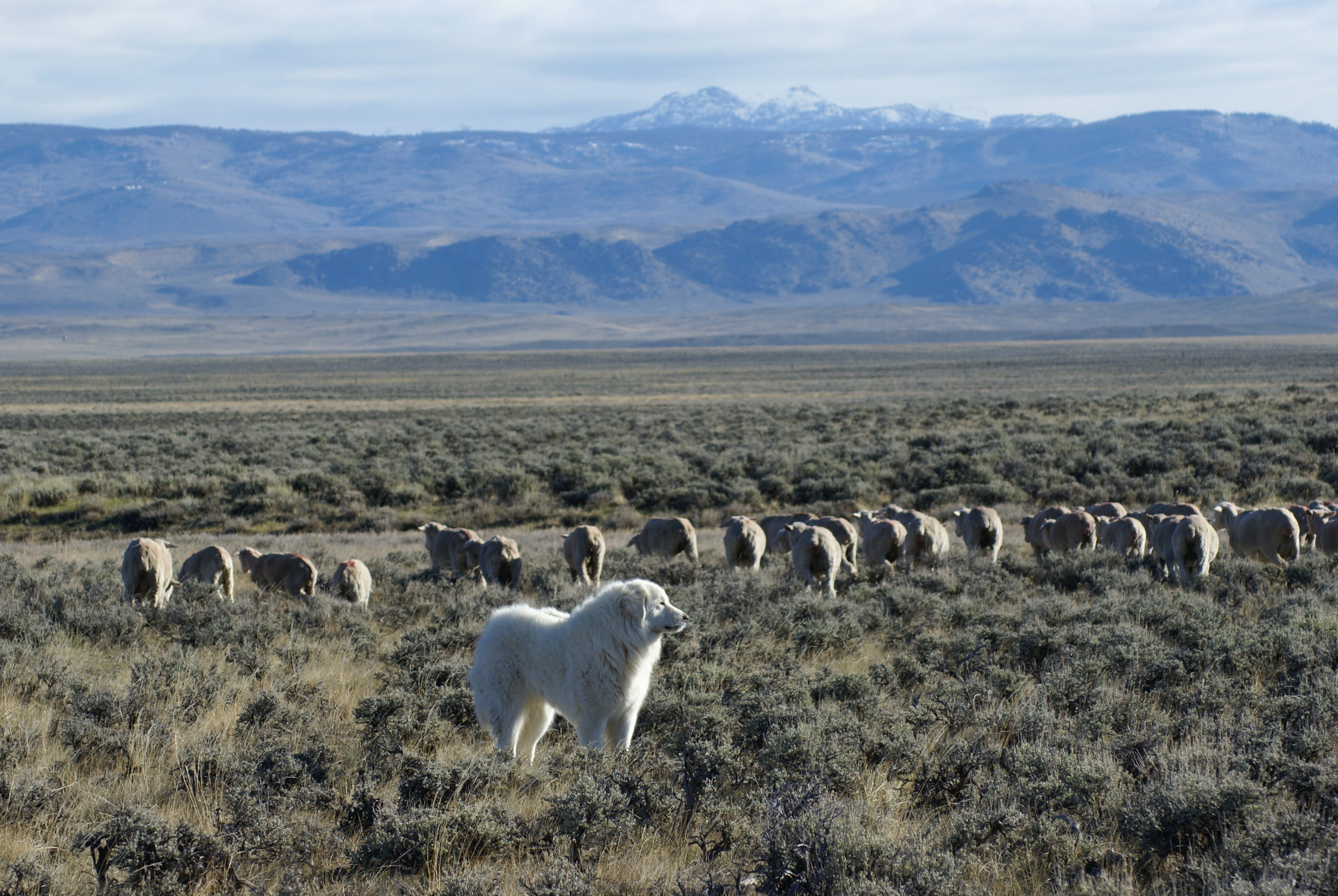
Some breeds of protection dogs, like the lovable, white-haired Great Pyrenees from the mountains of France and Spain are most comfortable sitting within the flock. While they can weigh from 80 to 120 pounds, their primary defense is a low and intimidating bark that carries. Big and loud, they will get between the herd and danger, but they’re not likely to give chase or get into a scrap.
More aggressive breeds, like the Kuvasz from Hungary or Kangals and Akbash, both from Turkey, are tougher, faster, and have more predator instinct. Weighing in at up to 140 pounds, any of these breeds can confront and challenge coyotes who are daring enough to ignore the pack’s warnings.
The strongest, most muscular, and athletic dogs, like the Central Asian Ovcharka, are important to have in summer as the flocks push high into the wolf- and bear-occupied tree lines at higher elevation to get the rich green grass and other vegetation that has thrived under the late season snowmelt. The Ovcharka are the elite heavyweight athletes. Strong, powerful, with immense shoulder and neck muscles, they are well built to go tooth to tooth with a western wolf. Their breeding equips them with a canine aggression and prey drive that gives them more than enough courage and conviction to face down and chase black bears, if necessary.
More and more, ranchers need these aggressive breeds to deal with an increasing population of wolves all through the west. Keep in mind a western range coyote weights 30 pounds. So a Pyrenees can easily intimidate it into moving on. But, Urbigkit quickly points out, a local rancher reported seeing a three-year-old wolf just the previous day that was at least 110 pounds. And they can get up to 130 pounds. For that you need a powerful breed not only to protect your sheep but to protect the other dogs.
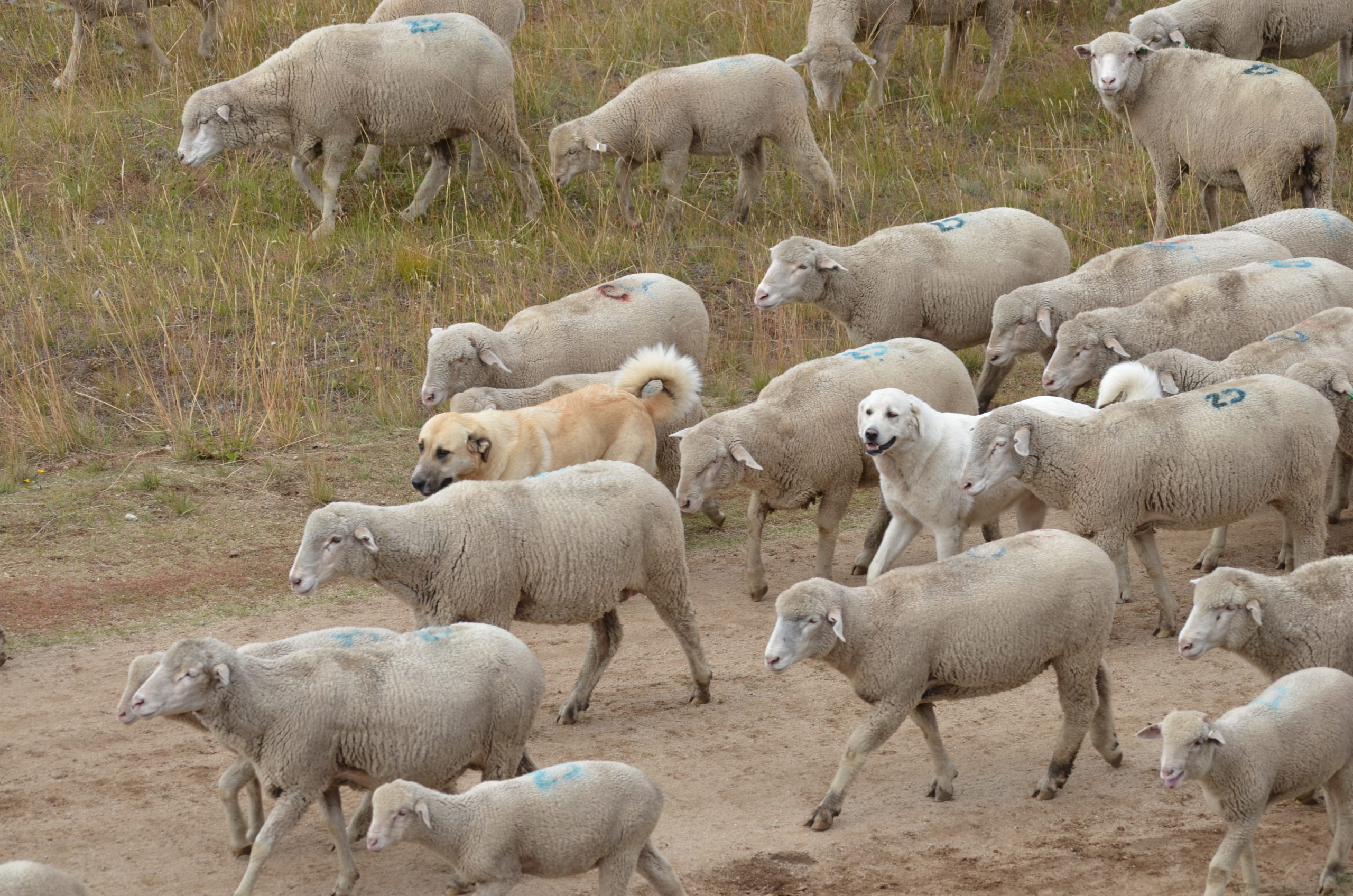
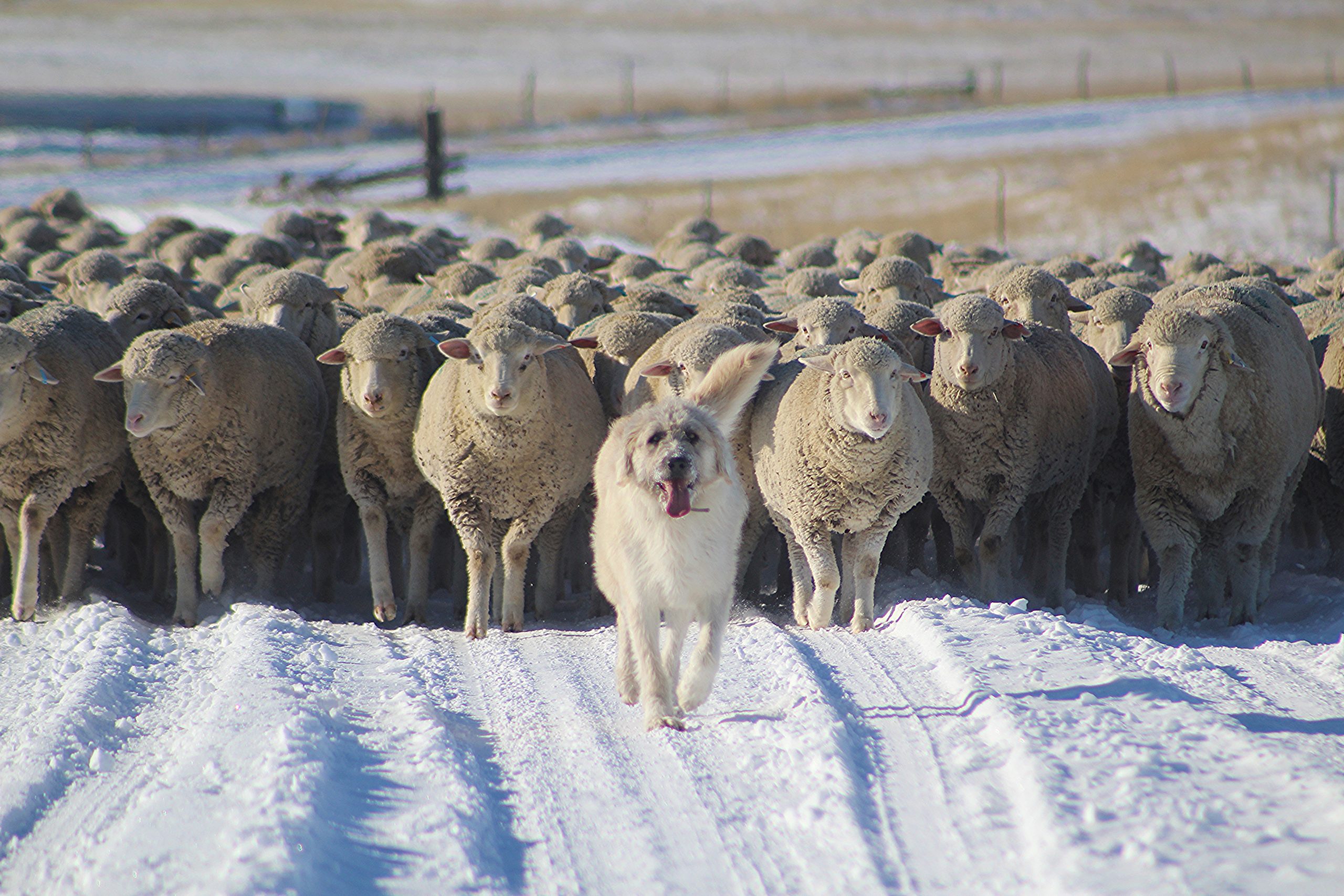
According to Urbigkit, the goal is not to have trained “super dogs” that want to kill other wild animals. It’s more to allow ranchers and their sheep to coexist with nature. While predators can cause ranchers many a sleepless night, most people who work the land recognize and respect that predator species are an important part of the natural and sustainable food chain. “I’d much prefer to scare them off then have to kill them,” says Urbigkit. “In thirty years of ranching I’ve found most people enjoy seeing these wild animals and try to be compassionate about living among them.”
Dan Macon’s experience in Northern California is much the same. “I had game cameras last spring that captured mountain lions present. The dogs did their job, none were hurt, no cats were hurt, and we didn’t lose a single sheep or lamb.”
When asked about injuries to the guardian dogs, Macon has little to worry about. “In my experience I have not observed any injuries from big predators. The dogs just frustrate them. The bigger problem for us is when the dogs get into it with raccoons and skunks.”
Urbigkit who operates further out in the wild is matter-of-fact but still caring in her answer. “A ranch is a hard place to work. Horses get hurt, dogs get hurt, and people get hurt. We do our best to avoid it by doing things the right way; mending injuries quickly; taking the proper precautions; listening to each other and the animals. But at the end of the day, we’re working in the wild.” Cat goes on to describe the process of mending the working dog, “the problem is that before they are healed up, they want to get back to work. They don’t like being pampered up at the house. In fact, we often bring a sheep to the kennel so they feel all is well rather than something is wrong.”
Macon shares a similar story. “We had a yearling dog that we had neutered and the vet suggested we keep it in the barn until it was healed. On night one it found its way out of the barn and made it back to the sheep.”
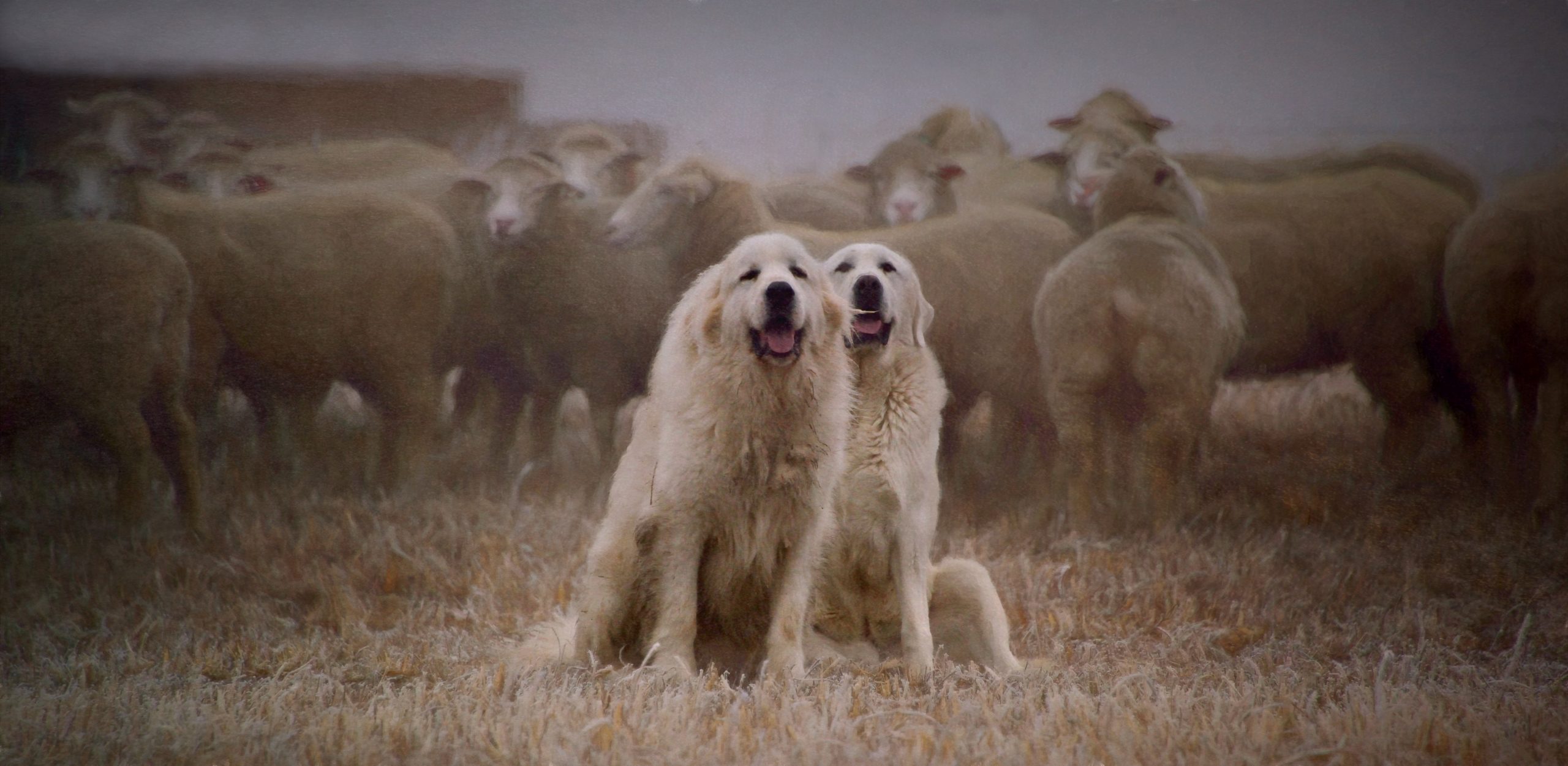
Despite their might, most guardian breeds have solid and calm temperaments and are famous for being gentle around children. This amazing part of their personality isn’t surprising once you consider that throughout history shepherding all over the world was a job for children. The dogs these children supervised were also required to have the relaxed temperaments to be around other animals and villages.
Today those same instincts allow sheep ranching families to feel safe around the animals that protect their flocks and often roam freely on the ranch. “Ask anyone who uses guardian dogs and you’ll hear the same thing,” says Urbigkit. “Guardian dogs are pleasant to live with and they literally keep us in business.”
To learn more about the entire wool experience and all that goes into processing wool, click here.
